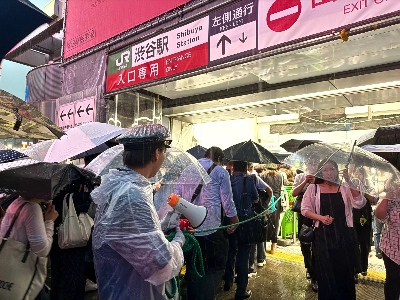Edo, as Tokyo was called until the Meiji Restoration in 1868, was a large but verdant city whose population of more than a million lived in harmony with nature. The greenery deeply and favorably impressed European diplomats and botanists who were accorded the rare privilege of entering the city of the shogun.
Among these foreigners was Rudolph Lindau (1830-1910), a Prussian posted to Japan as Switzerland's trade representative and consul. In his book "Un Voyage Autour du Japon" published in 1868, he described his first view of Edo, in 1862, from a high point on its western border, probably near present-day Shinagawa: "This city is very favorably located. Much larger than any grand capital of Europe, it is situated on gently undulating terrain, embraced by a smiling sky and bordering on a beautifully curving, magnificent bay.
"So many parks and gardens fill the city that, from a distance, it looks like one immense park. One sees trees planted everywhere, clustered in masses or lining streets. Their dense foliage hides modest homes of merchants, revealing only the buildings of temples and residences of daimyo lords."


















With your current subscription plan you can comment on stories. However, before writing your first comment, please create a display name in the Profile section of your subscriber account page.